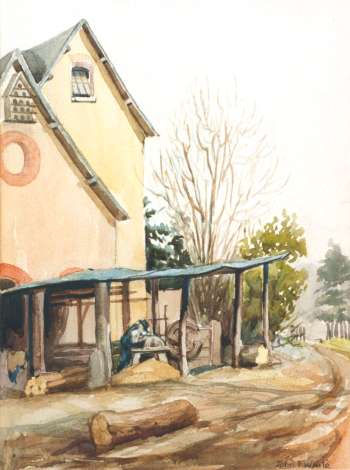History of Southend
Southend Village, as its name suggests, was the last settlement in Lewisham on the road south to Bromley. It was separated from Catford in the north by a wide belt of farmland, and from Sydenham in the west by the Pool valley. This isolated position meant that Southend was the last rural outpost of the borough, not urbanised until the 1920s.
Southend was a farming community for most of its history, but in the eighteenth century it had some industry, based on the water power of the Lower Mill, which Ephraim How and his son John used to manufacture the best knives and forks in England. This mill had other industrial uses after the Hows left, but reverted to the grinding of corn early in the nineteenth century.
The Upper Mill was always used for corn, and was kept busy by the farms that surrounded the village. But among the farms and mills there was also a scattering of large houses occupied by some of Lewisham's richest men, who could here enjoy a country life while remaining close to the City. John Forster of Southend Hall, the leading landowner in the parish, was a well-known London solicitor.
A way of life that had persisted since the seventeenth century began to change late in the nineteenth as the opening of a railway station and the threatening approach of building development drove the wealthy further into the country. Flower House, formerly the home of a Forster son, became a lunatic asylum; Park House, built for an Indian nabob, was turned into an hotel, and eventually Southend Hall itself became a film studio.
The farms were gradually broken up, the mills were converted to other uses, and the extension of the tramlines to Southend in 1913 turned the village into the holiday playground of Lewisham's suburban population. After the First World War the huge London County Council estates were built on either side of the village, and the few remaining fields were soon covered with private housing.








